The Photopoint Light Pen
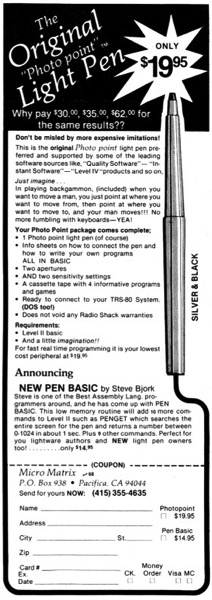
Micro Matrix advertisement for the Photopoint from the August 1980 issue of 80 Microcomputing
Operation
Light pens at the time worked using two approaches. The first was to detect the screen refresh. All CRT displays refresh the screen by continually scanning a beam from left to right and top to bottom. Many light pens detected the flash of light caused by the refresh and used the time difference from the start of the refresh to determine exactly where on the screen the pen was pointed. (This was also the same technique used by light guns such as the Atari’s XG-1.) This required that the light pen software have access to the precise starting time of the refresh, something not possible with stock TRS-80 hardware (or most other computers at the time).1
The other, much simpler approach was used by the Photopoint, as well as most other TRS-80 light pens. The light pen software didn’t try to detect the refresh at all. Instead, it flashed sections of the screen in a pattern. The software timed from when it started flashing the screen to when it detected the flash. It used this time to precisely calculate the light pen position. This took more time than detecting the refresh, but it could be done with much less expensive hardware and was less susceptible to variations in screen brightness.
The Photopoint2 looked like a small pen with a removable tip. It connected to a cassette recorder, either to the microphone or auxiliary jack, and was powered by a 9-volt battery (which was included). Using the Photopoint required that the cassette recorder be set to RECORD with a tape removed (a procedure familiar to any TRS-80 owner who used the cassette for game sound). Part of the reason for the low price of the Photopoint was that it used the amplifier in the cassette recorder to simplify its hardware requirements. The Exatron MM+ included a dedicated light pen port for connecting the Photopoint or compatible light pen.
Software
The Photopoint package came with two demonstration programs on cassette. It also included four games: Backgammon, Tic-Tac-Toe, Word Sampler, and Cube Chase. Micro Matrix also sold PEN BASIC for programmers who wanted to write their own light pen programs. PEN BASIC, written by Steve Bjork, cost $14.95 and added six light pen commands to BASIC. Later, Steve Bjork became well known for his highly regarded games and programs for the TRS-80 Color Computer, such as Zaxxon, Gwana Bwana, and Pooyan.
Quality Software of Reseda, California and Instant Software of Peterborough, New Hampshire both sold TRS-80 games and educational titles that supported the light pen. According to a review in Creative Computing, the Photopoint was also compatible with software written for the 3G Light Pen from 3G Company of Gaston, Oregon after minor alterations.
Despite high hopes for its future, the light pen never really took off. Part of the problem was that people soon became tired when holding a pen up to a computer screen (a phenomenon known as “gorilla arm”). There were some further light pen successes (the $349.00 Gibson Light Pen for the Apple II was one notable example) but the mouse completely replaced the light pen as the preferred tool for pointing.
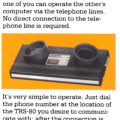
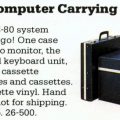
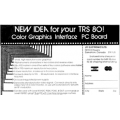
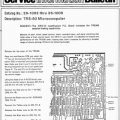










MiaM says:
Sidenote:
Commodore VIC-20, C-64 and C-128 supported a light pen directly within the graphics hardware.
Even today more than 30 years after I first used a light pen I still find it interesting that ESD didn’t fry the computer or light pen hardware.